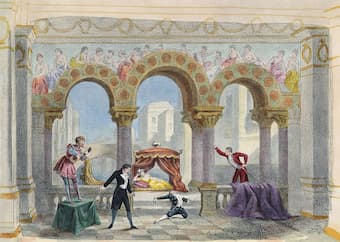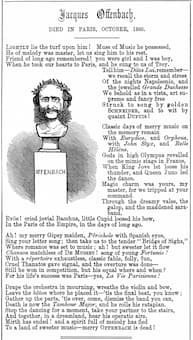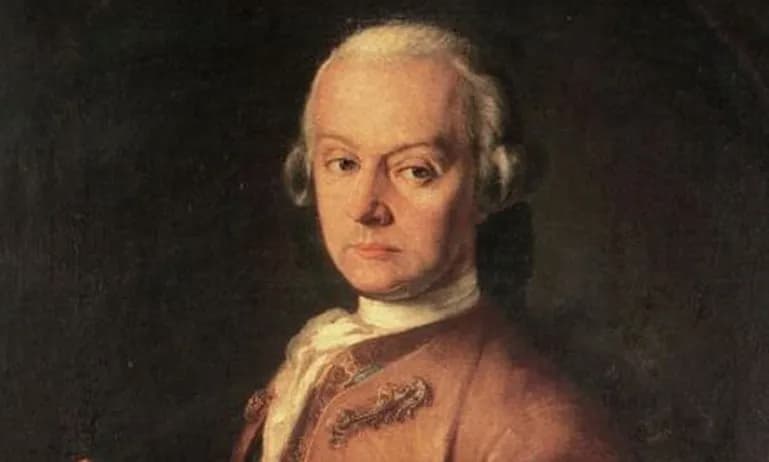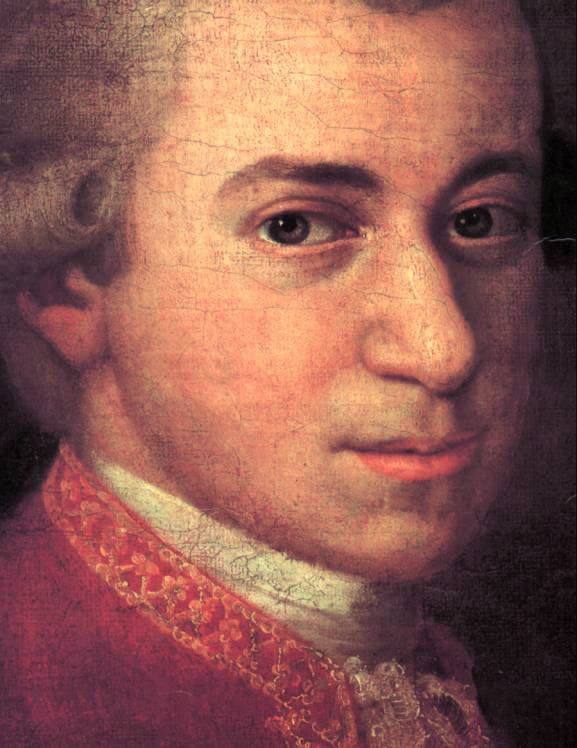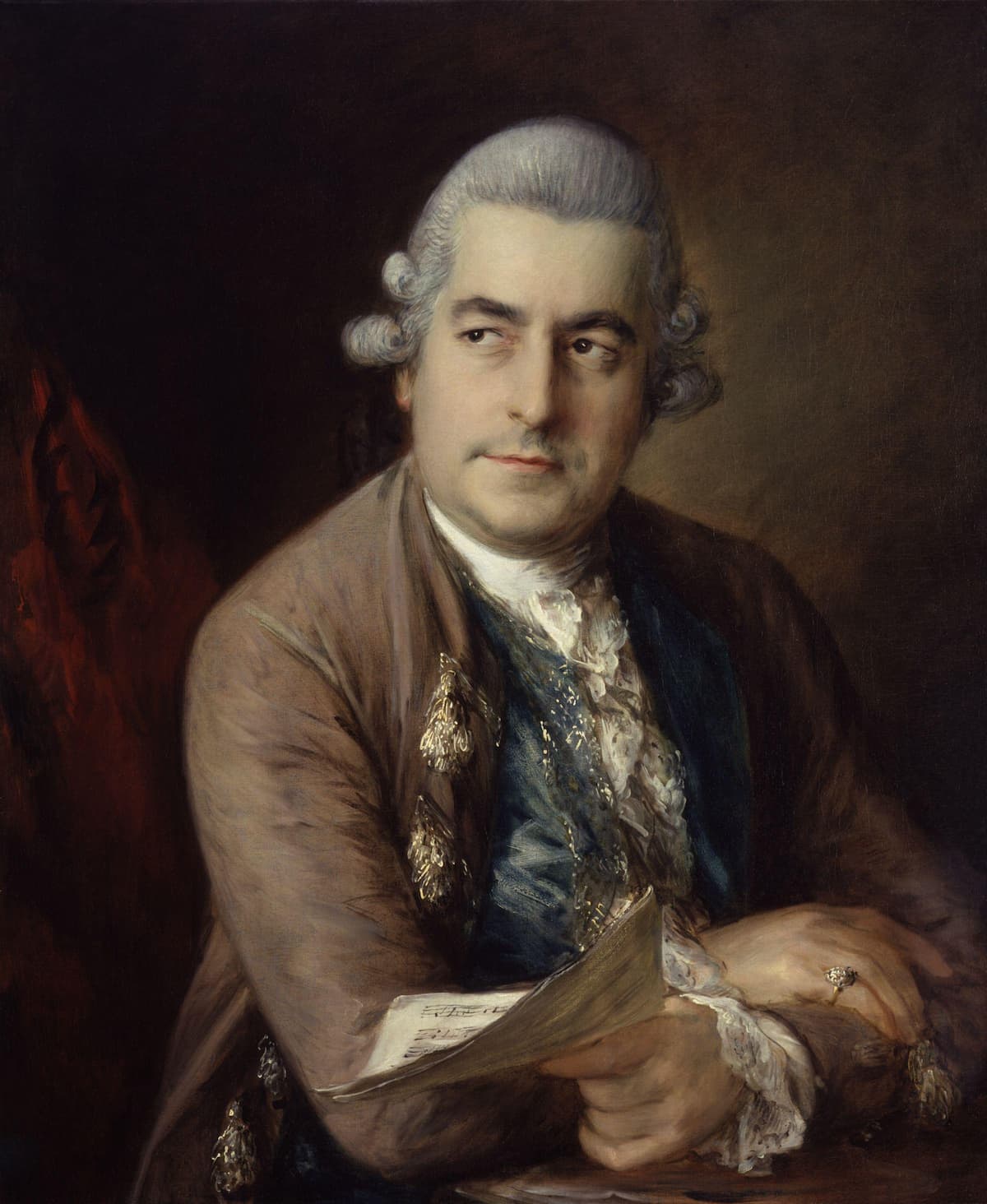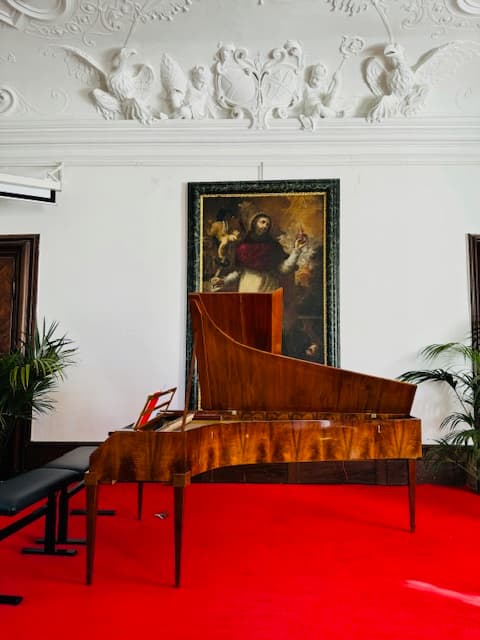We’re sharing them in reverse countdown style order, starting with the worst-reviewed and working our way up to the best.
So, pop some popcorn and enjoy these thirty movies about classical music.

Paganini: The Devil’s Violinist (2013) – 13 reviews, 31% positive
Have you ever been frustrated by actors in movies faking playing their musical instruments? Have you ever fantasized about how cool it would be if actual musicians could play musician characters?
Then this movie might be for you. In 2013, violinist David Garrett starred as nineteenth-century superstar Niccolò Paganini. The film traces his shocking gambling losses and his scandalous love life. Pro violinist David Garrett plays violin onscreen, but according to most critics, that wasn’t enough to save the film.
Rhapsody in Blue (1945) – 6 reviews, 33% positive
In 1937, composer George Gershwin died at the age of 38 from a brain tumor. A few years later Hollywood came calling, seeking to immortalize his life in film.
The first big tribute to him came in the form of the movie Rhapsody in Blue, which starred actor Robert Alda as George Gershwin.
The movie was a bizarre mishmash of real life and fiction. Weirdly, George’s sister was completely written out of the story of his life, and his love interests in the movie were not based on real women. Meanwhile, other friends like Al Jolson and Oscar Levant made cameos as themselves.
Critics complained that the film has too many musical performances in it. (But maybe that intrigues you!)
Unfaithfully Yours (1984) – 18 reviews, 33% positive
Claude Eastman (played by Dudley Moore) is both a conductor and a composer. He has just married a much younger woman, and he harbors paranoia that she is going to cheat on him, so he hires a private detective to follow her.
The detective comes back with footage of Eastman’s wife with one of his orchestra’s playboy violinists. But is his wife really cheating, or is it all just some comic misunderstanding?
August Rush (2007) – 123 reviews, 37% positive
In this movie, a cellist studying at Juilliard gets pregnant after a one-night stand with a rock singer. She gets hit by a car, goes into a coma, and gives birth while unconscious. Her father has the boy put up for adoption but tells his daughter that he died.
As you can imagine, the boy turns into a musical savant. He and his mother embark on twin journeys to find each other. Will they finally reunite in dramatic fashion at a New York Philharmonic concert in Central Park? You’ll have to watch to find out!
Although critics were not fond of this movie, audiences loved it. There’s a huge discrepancy between the critics’ scores and the audiences’: 37% to 82%. So maybe it’s worth checking out after all!
Lisztomania (1975) – 11 reviews, 45% positive
This is definitely the weirdest movie on this list. It’s very (very, very) loosely based on the life of composer and pianist Franz Liszt. It starts when Liszt and his mistress Marie d’Agoult are caught in flagrante by her husband. The two are punished by being nailed inside a piano that is then placed in the path of a speeding train. And that’s only the beginning.
All kinds of madness proceed to ensue. (The film ends with Liszt using a spaceship to destroy a Wagner-Hitler hybrid, just in case you were wondering.)
Coco Chanel & Igor Stravinsky (2009) – 94 reviews, 52% positive
This movie is based on the 2002 novel Coco and Igor by Chris Greenhalgh, which is an imagination of the potential affair between the two creative giants.
So, did Chanel and Stravinsky actually indulge in a dalliance? Some people think so; others don’t; there is apparently no concrete proof. But if it did happen, it probably looked something like this stylish evocation of 1920s Paris.
The Soloist (2009) – 207 reviews, 56% positive
In 2005, real-life Los Angeles Times journalist Steve Lopez met a bass player with schizophrenia named Nathaniel Ayers, who was living on the streets of Los Angeles. Ayers attended Juilliard for two years but had to drop out due to his deteriorating mental health.
The movie explores what happened next: how a reader procures Ayers a cello, Ayers’ struggle to get into housing, and how the friendship impacts Lopez.
The two main characters are played by Robert Downey, Jr., and Jamie Foxx.
Humoresque (1946) – 8 reviews, 57% positive
Humoresque is a delicious black and white melodrama. It charts the career of violinist Paul Boray (played by John Garfield), his love affair with his unhappily married patroness Helen Wright (played by Joan Crawford), and Boray’s erotically charged partnership with pianist Sid Jeffers (played by the ever-quippy Oscar Levant).
The film features some of the more convincing violin faking in cinema history, since violinist Isaac Stern’s hands were filmed in such a way to make it appear that John Garfield was actually playing.
One more fun fact: Franz Waxman’s Carmen Fantasy for violin and orchestra was written for this movie!
Immortal Beloved (1994) – 56 reviews, 57% positive Play
After discovering some sensitive papers after Beethoven’s death, his secretary Anton Schindler attempts to ascertain the identity of a woman Beethoven labeled his “immortal beloved.”
He speaks to Beethoven’s piano student, Giulietta Giucciardi – then Anna-Marie Erdödy, a woman who Beethoven befriends after his deafness causes a concert he’s conducting to go disastrously – and, finally, Johanna Reiss, his brother’s wife, a woman who he claims to loathe, and who harbors a truly shocking secret.
Farinelli (1994) – 25 reviews, 60% positive
Farinelli is a biopic devoted to castrato singer Carlo Maria Michelangelo Nicola Broschi, better known by his stage name, Farinelli.
An important part of the movie is the relationship between Farinelli and his brother Riccardo. The two are involved together in various romantic escapades with various women.
The film also features cameos by real-life figures like Nicola Porpora and George Frederick Handel.
Music of the Heart (1999) – 91 reviews, 64% positive
In Music of the Heart, Meryl Streep plays real-life school music teacher Roberta Guaspari, who starts teaching at a public school in Harlem. After ten years of building up the music program across multiple schools, funding is cut and Guaspari loses her job.
To save the program, Guaspari and the students decide to mount a benefit concert. However, shortly before the show, they lose their venue. Can classical music superstars like Itzhak Perlman and Joshua Bell save the day?
Mozart’s Sister (2010) – 63 reviews, 73% positive
This movie is a fictionalized take on the life of Nannerl Mozart, Wolfgang Amadeus’s older and musically talented sister.
While on tour, the Mozarts’ carriage breaks down and they are forced to stay at the abbey where the teenage Princess Louise of France lives.
With Louise’s introduction in-hand, the Mozarts go to Versailles. Nannerl tiptoes around a romance with a member of the French royal family. At the same time, she pushes back against her father, who doesn’t believe it is proper for her to compose or play the violin.
The Piano Teacher (2001) – 89 reviews, 73% positive
The Piano Teacher is a spicy – and violent – French movie.
The main character, Erika, is a fifty-something piano professor in Vienna who lives with her controlling elderly mother. She enters into a romantic relationship with a young engineer who is also studying music. He ultimately becomes her student.
A lot proceeds to happen in that relationship that is not particularly family friendly, so we won’t get into it here. But if you want to watch it, we’re certainly not going to stop you.
Impromptu (1991) – 19 reviews, 74% positive
If you’ve ever wondered what Chopin would be like if he was a Hugh Grant character, have we got the movie for you!
Impromptu is a sweet, charming, semi-historically accurate comedy recounting the story of the start of the romance between authoress George Sand (played by Judy Davis) and Frederic Chopin (played by Grant).
Opera-like misunderstandings develop when Franz Liszt (played by Julian Sands) and Countess Marie d’Agoult (played by Bernadette Peters) join the story.
The Red Violin (1998) – 42 reviews, 74% positive
The Red Violin is more like a series of short films than one cohesive whole. It traces the history of a fictional violin made by a fictional luthier whose wife dies in childbirth.
Over the course of its life, the mysteriously red violin finds its way into the hands of a sickly child prodigy, a sexually voracious Paganini-like figure, and a music teacher caught up in the Cultural Revolution in China.
The framing device linking these stories together is the story of the violin being auctioned in the present day and investigated by an appraiser played by none other than Samuel L. Jackson.
Mr. Holland’s Opus (1995) – 28 reviews, 75% positive
In Mr. Holland’s Opus, Richard Dreyfuss plays Glenn Holland, a music teacher who longs to write a symphony.
However, he’s distracted from composing by the demands of teaching high school students. He also becomes disconnected from his home life: when his son Cole is found to be deaf, he doesn’t put in the work to learn sign language, resulting in his wife becoming more-or-less a single parent.
What will happen when budget cuts threaten his job thirty years after Mr. Holland takes it? You’ll have to watch to find out.
A Late Quartet (2012) – 113 reviews, 77% positive
A Late Quartet follows the members of the fictional Fugue String Quartet, which is reeling after their cellist Peter (played by Christopher Walken) is diagnosed with Parkinson’s.
The second violinist Robert and violist Juliette (played by Philip Seymour Hoffman and Catherine Keener) are a married couple, and tensions about their respective roles in the ensemble lead Robert to cheat on his wife.
Oh, and first violinist Daniel (played by Mark Ivanir) is in a relationship with Robert and Juliette’s daughter.
This movie charts all the messiness that follows. Roger Ebert observed, “It does one of the most interesting things any film can do. It shows how skilled professionals work.”
Chevalier (2023) – 162 reviews, 77% positive
Chevalier is inspired by the real-life story of Joseph Bologne, Chevalier de Saint-Georges, a violinist, conductor, composer, swordsman, and ladies’ man who was a prominent figure in eighteenth-century Paris.
The movie follows the difficulties that Bologne faced due to his race (his mother had been an enslaved teenager). Several real-life storylines become brutally shocking.
The film also chronicles Bologne’s rebellious fighting spirit and his ability to adapt to new political circumstances at the dawn of the French Revolution.
Grand Piano (2013) – 73 reviews, 79% positive
The premise of this film is absolutely ludicrous, so make sure to suspend your disbelief. Once you do that, it’s a fun ride.
Elijah Wood plays a nervous pianist who is returning to the stage after a break due to debilitating stage fright. When the concert starts, he sees a note in his sheet music that reads “Play one wrong note and you DIE.” A red laser appears on him. (Behold the dangers of not memorizing the solo part!)
Increasingly unhinged hijinks ensue, including chases on catwalks over the stage and even the death of an usher.
Autumn Sonata (1978) – 32 reviews, 88% positive
In Autumn Sonata, Ingmar Bergman directs screen legend Ingrid Bergman in her final performance.
Ingrid Bergman plays a renowned aging pianist named Charlotte. Charlotte visits her daughters Eva and Helena. Eva has married a pastor and takes care of Helena, who has several debilitating disabilities. The film follows the three women as they reconnect and try to come to terms with their difficult past.
(By the way, keep Ingrid Bergman’s name in mind, because she appears in another film on this list…)
Hilary and Jackie (1998) – 58 reviews, 88% positive
Hilary and Jackie tells the story of the real-life relationship (somewhat fictionalized for the sake of the movie) between Hilary du Pré and her cellist sister Jacqueline du Pré.
Jacqueline is fated to become one of the greatest musicians of the century, while Hilary is merely extremely accomplished.
The film examines the toll that great talent can take on a family, as well as the emotionally shattering aftermath of Jacqueline’s diagnosis of multiple sclerosis in her late twenties, which caused her astonishing career to be cut short just as it was getting started.
Note that the film included controversial details about Jacqueline’s relationship with Hilary’s husband and was criticized by some of her friends.
Florence Foster Jenkins (2016) – 237 reviews, 88% positive
Meryl Streep plays the real-life socialite and singer Florence Foster Jenkins, who became a sensation in early twentieth-century New York for her terrible singing and her often-mystifying confidence in her abilities.
Hugh Grant stars as her manager and companion, who has been known to bribe reviewers into giving her positive press, while Cosmé McMoon (played by Simon Helberg, best known for his role as Howard from The Big Bang Theory) reluctantly signs on to be her accompanist.
Eventually a deluded Jenkins books Carnegie Hall and sells out the whole place. The movie explains how she became such a camp favorite and a strangely inspirational figure.
Amadeus (1984) – 154 reviews, 89% positive
This might just be the most renowned movie about classical music ever made.
In the film’s opening, composer Antonio Salieri is committed to a mental institution after attempting suicide. He recalls to a priest how he once pledged faithfulness to God in exchange for musical talent. However, when Salieri meets the effortlessly talented Wolfgang Amadeus Mozart and witnesses his obscene sense of humor in action, Salieri comes to believe that God has chosen to mock him by placing the talent that should rightfully be his in Mozart’s hands instead. He vows to destroy Mozart in whatever way he can.
It’s not historically accurate, but it’s inspired storytelling.
The Piano (1993) – 71 reviews, 90% positive
In The Piano, a nineteenth-century Scotswoman named Ada McGrath (played by Holly Hunter) arrives in New Zealand to marry a frontiersman named Alisdair Stewart (played by Sam Neill). Ada brings along her precocious six-year-old daughter and a piano.
Ada is a mysterious woman. She has not spoken since childhood, preferring instead to communicate by playing piano. She also refuses intimacy with Stewart, who refuses to retrieve Ada’s heavy piano from the beach or to make any effort at all to understand his new wife’s desires.
Stewart’s neighbor, George Baines, eventually transports the piano from the beach, using Ada’s passion for the instrument as a tool to seduce her. Eventually Ada develops feelings for him. The film deals with the messy fallout from their relationship and her overwhelming love for her piano and music.
Shine (1996) – 44 reviews, 91% positive
In Shine, a musical Australian boy named David Helfgott struggles under the pressures of his abusive teacher father Peter. Peter forbids his son from studying in America.
David gets a little older and befriends a novelist named Katharine. He’s offered another opportunity to study out of the country, this time in London. With the encouragement of Katharine, he finds the strength to leave, but Peter makes it clear to his son that if he goes, he will not be welcome at home again.
After leaving home, David’s mental health deteriorates dramatically, and he will have to endure intense struggles to stay in music.
Shine is based on a real-life story.
Tár (2022) – 348 reviews, 91%
In Tár, Cate Blanchett doesn’t just play the eponymous title character, conductor Lydia Tár; she embodies her.
Lydia Tár is the first woman conductor of the Berlin Philharmonic and preparing to make a landmark live recording of Mahler’s fifth symphony.
However, her relentless march into the pantheon of great conductors is interrupted when an estranged former protege dies by suicide, opening the door to an investigation of Tár’s abuses of power and privilege.
Will she be able to escape accountability? And what exactly does accountability even mean in an art form that has historically harbored and celebrated manipulators and abusers of all kinds?
Fantasia (1940) – 58 reviews – 95% positive
Fantasia is a “musical anthology” film, featuring eight segments of classic Disney animation set to classical music performed by conductor Leopold Stokowski and the Philadelphia Orchestra.
The film includes such legendary animations as the seasons changing to Tchaikovsky’s Nutcracker; a comic ballet danced by cartoon ostriches; and Mickey Mouse attending to his duties as the Sorcerer’s Apprentice, to the work by Paul Dukas of the same name.
Fantasia’s soundtrack was recorded with innovative new recording methods that necessitated 33 microphones. Over 42 days of recording, 483,000 feet of film were used!
The Pianist (2002) – 189 reviews, 95% positive Play
The Pianist tells the story of Jewish Polish pianist Władysław Szpilman. As the title suggests, Szpilman is a young and very promising pianist. He is playing a recital on the radio when war breaks out.
In 1940, after the Nazi invasion of Warsaw, he and his family are sent to the Warsaw Ghetto, where many people die of illness, starvation, and violence in horrific conditions.
Szpilman is forced to embark on a harrowing journey to do whatever he can to resist and survive.
An American in Paris (1951) – 101 reviews, 95% positive
An American In Paris is one of the great classic Hollywood musicals.
Dancer Gene Kelly stars as an artist named Jerry trying to make it in postwar Paris.
His best friend is Adam, a sardonic pianist played by Oscar Levant.
Adam has a singer colleague named Henri (played by Georges Guétary), who is engaged to Lise (played by Leslie Caron).
To top it all off, the elegant Nina Foch plays an heiress who is taken by Jerry’s art…or maybe just Jerry himself!
The plot, however, is secondary to the soundtrack, which consists of the greatest hits by George Gershwin. Its centerpiece is a dazzling seventeen-minute fantasy ballet set to – you guessed it – An American In Paris. It’s unforgettable.
Intermezzo (1939) – 11 reviews – 100% positive
Remember that we mentioned to keep Ingrid Bergman’s name in mind? That’s because she’s the star of the number-one-rated classical music movie, Intermezzo, which also happens to be the first film that Ingrid Bergman shot in America.
Leslie Howard stars as a famous violin soloist named Holger Brandt who invites his daughter’s piano teacher (played by Bergman) to accompany him on his next tour. During the tour, the two fall madly in love. Will their love last, or will Brandt return to his family?
Conclusion
We’re coming up on a hundred years of films about classical music and classical musicians, and as Chevalier and Tár demonstrate, it seems likely that directors, screenwriters, and actors will continue to be inspired by the world of classical music in the years to come!


